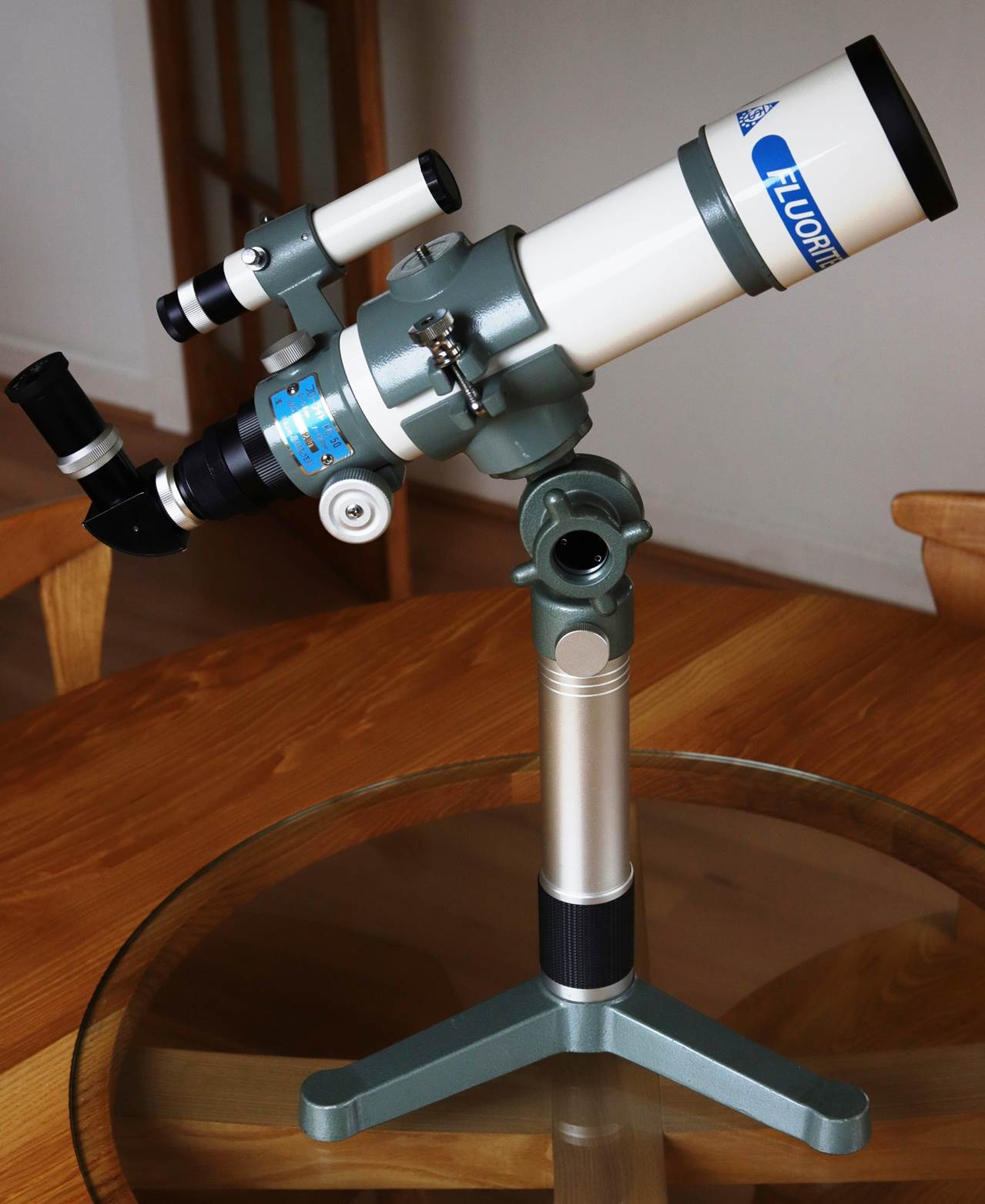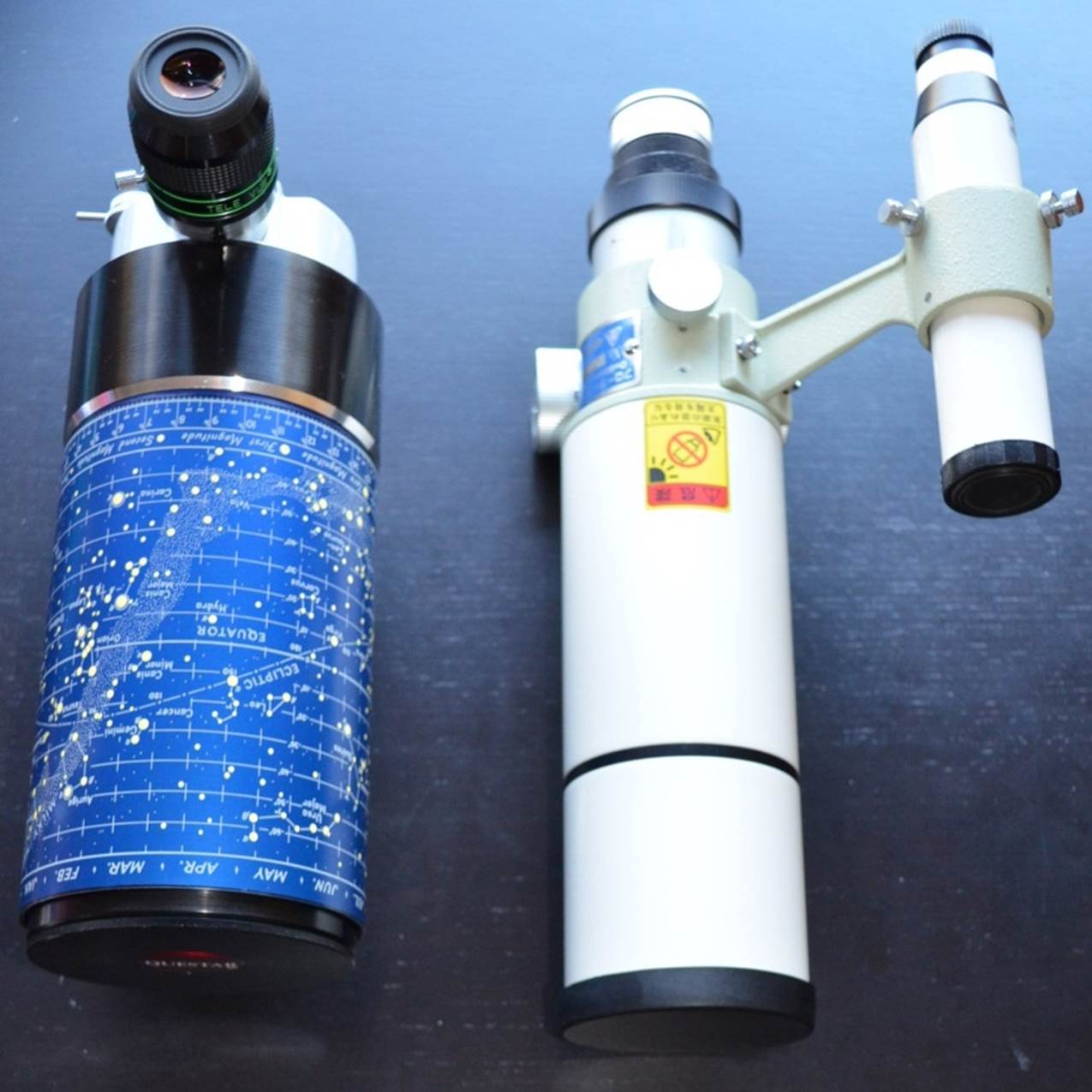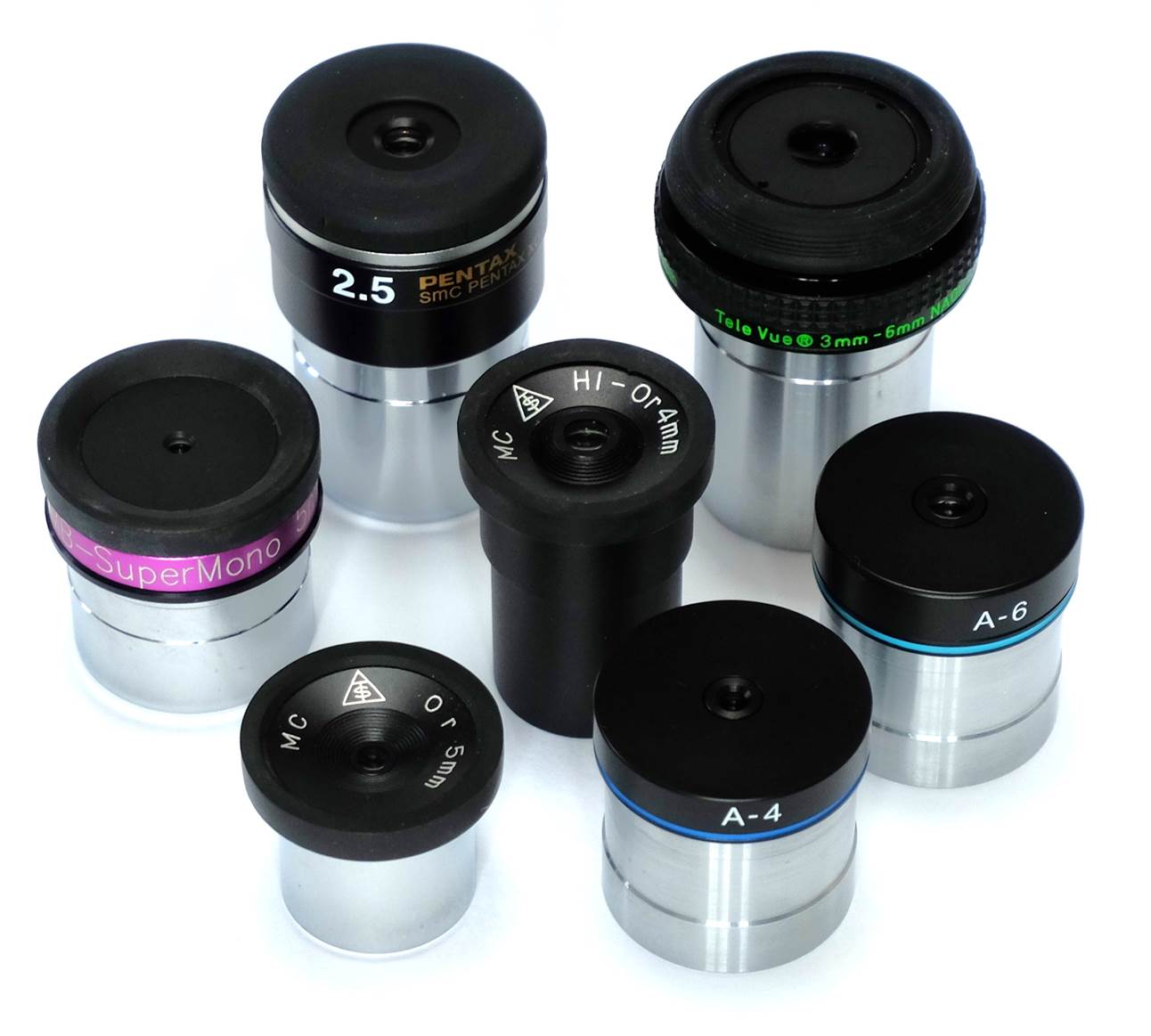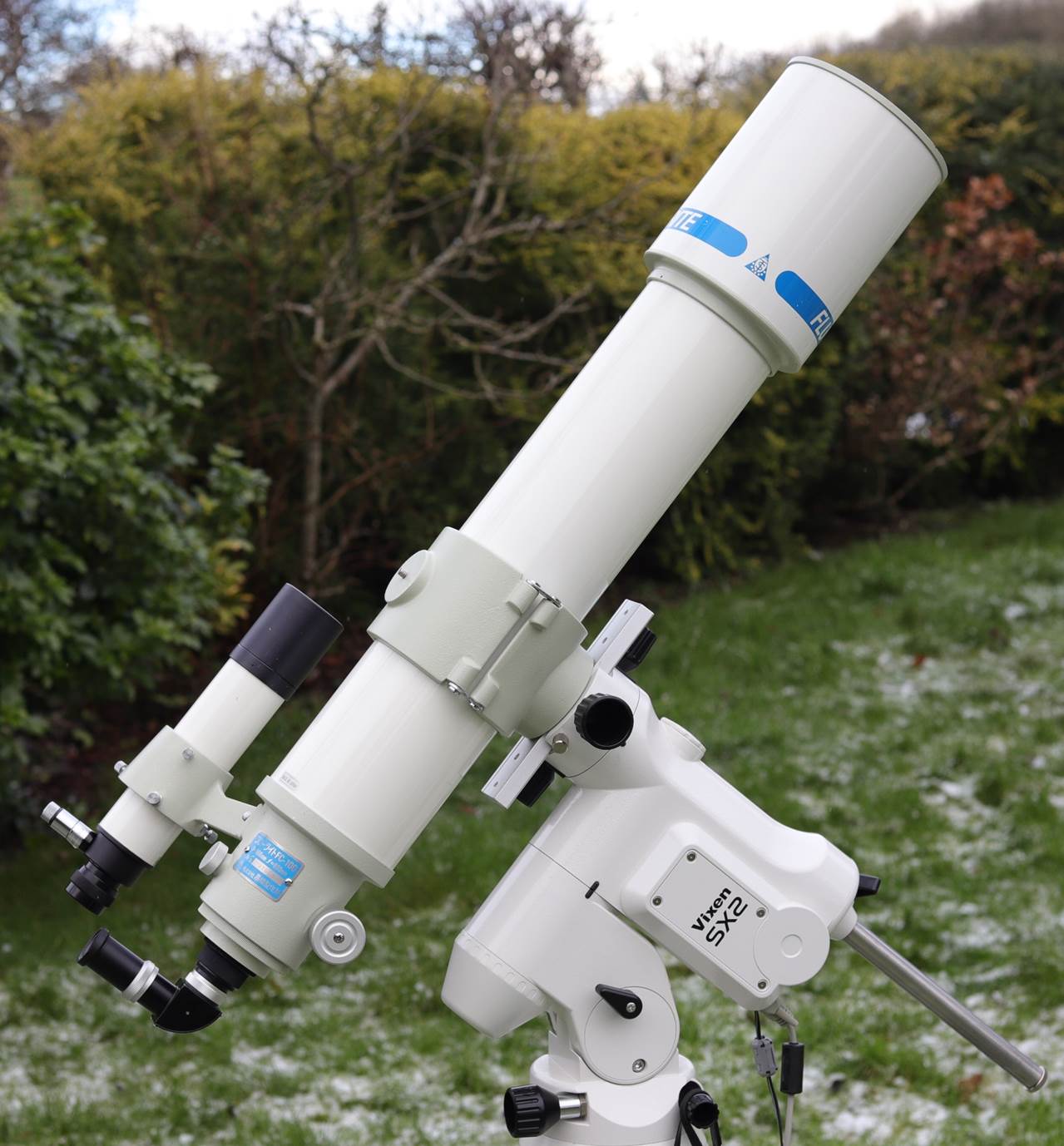Telescopes for Planets

Astro Physics 130 EDT – an absolute planetary classic.
A Manifesto for Planetary Astronomy
My
main (though certainly not only) interest in Astronomy is and always has been
the Moon and Planets. To some this is the hallmark of a newbie, which always
makes me laugh because it is an attitude hangover from the middle of last
century when planetary astronomy was making no progress and was deeply out of
fashion. In fact, the Moon and planets make fascinating subjects for both the
observer and the imager.
The
Moon has an endless array of interesting detail and is a whole other world of
mountains, cratelerlets, domes, rilles
and rays to explore. People used to think the Moon was static and
unchanging; reporters of “Transient Lunar Phenomena” were regarded as cranks.
Then someone a few years imaged flashes from meteorite impacts…
Meanwhile,
it is a constant challenge to pick out and perhaps sketch planetary detail,
whilst the planets change in a way stars and deep sky objects do not. Mars has
clouds and dust storms and the albedo marking show subtle variations;
the ice caps grow and shrink with the seasons. Mars periodically suffers global
dust storms which blot out all surface detail.
Jupiter
has frequent changes in its cloud belts and spots, whilst its moons change
position, occult and show shadow transits. Saturn is
more stable, but the rings change angle and you might be lucky enough to see a
new white spot (the original was found by an amateur – Will Hay). Occasionally
something really dramatic happens, like the impact of
a comet into Jupiter which has happened twice in the last few decades and left
dark marks visible with even a small telescope: I vividly recall seeing the
wield left by Shoemaker-Levy on Jupiter with my old C8.
Then
again, a view of Saturn on a fine night through a big scope is just
unforgettably beautiful and emotive.
You
might think that, given all the probes out there, that NASA would be the first
to notice big things happening on the planets. Not so. The cameras of space
probes (and for that matter of Hubble and professional Earth-bound
observatories) tend to be pointed at small areas for short periods because
observing time for specific investigations is precious and limited. Nowadays,
as always, if something happens there may be no professional looking.
Which Telescope?
So
if you want to explore the Moon and planets yourself, what kind of equipment do
you need?
To
stand a chance of revealing detail on the planets visually, a telescope needs
to deliver:
· High resolution
· High contrast (which isn’t
the same thing)
· Good sharpness at high power
· Precise and stable focusing

An
accurate focuser, like this Feather Touch from Starlight Instruments, is vital
at high powers on planets.
These
essentials depend heavily on the quality of the optics, but also on the
focuser, which needs to be accurate and have minimal image-shift to achieve
critical focus at high power. The mount is important, too, but I’ll get back to that. There is also some dependency on
the type of telescope. I’ll look at
that next...
Refractors
The
traditional planetary telescope is the long-focus refractor. Refractors tend to
work well on planets, if they are good optically, because of the following
factors:
· No central obstruction (secondary mirror) means
better contrast for a given aperture.
· Refractors don’t need such
high optical quality to work well (see section on optical quality).
· Lenses scatter less light than mirrors.
· Refractors typically suffer less from collimation
and cool-down problems.
· Small, unobstructed apertures often perform better
in mediocre seeing.
None
of these factors make refractors definitively better than reflectors, but size
for size a good refractor will always outperform a good reflector, though by
how much depends on the design and quality of the reflector – an
optically-perfect long-focal-length Newtonian can get quite close to a
similarly sized refractor.
Does
a refractor need to be an apochromat? No, but if it’s
an achromat it needs to be a long focal length one (F12-F15 plus) to
minimise false colour. Chromatic aberration in significant quantities will kill
planetary detail and contrast.
Apochromats
don’t have to be long focal length, but it can give
some advantages:
1) Long focal lengths are easier to figure well and
likely to be of higher optical quality
2) Aberrations are easier to control in longer focal
lengths
3) Longer focal ratios make precise focus less
critical and easier to obtain
4) May work better in poor seeing
Triplet
or doublet apochromat?
Doublets
are easier to manufacture, cool more quickly and have fewer optical surfaces to
scatter light or become miscollimated. Long focal
length doublets (F8 or more) are often a better choice. Triplets can work at
shorter focal lengths, but only if they’re of high
quality.
However,
many doublets generate too much residual chromatic aberration to be ideal for
planets. Many doublets are poorly corrected at
the red end of the spectrum too (so are relatively poor for Mars). An exception
is the long focal length fluorite doublet which can be an ideal planetary
instrument, especially the older ones that are optimised for visual (many
modern ones are better corrected for digital imaging, the FC-100DZ shown below
is an exception).

Takahashi’s
F8 fluorite doublets make excellent planetary scopes: recent FC-100DZ on the
left, classic FC-100 on the right.
Reflectors
If
you opt for a reflector, choose the following characteristics:
· Small central obstruction
· Good baffling
· The best optical quality possible
The
situation to avoid, as Suiter identifies in Star Testing Astronomical
Telescopes, is when optical problems overwhelm the image like a wobbly stack of
filters that finally falls over. This can happen, for example, when a reflector
has barely acceptable optics, a large obstruction, is slightly out of
collimation and has a sloppy focuser. Such a telescope will probably show
planets as nothing more than bright, blurry blobs.

Classical
Cassegrains and variants like this Takahashi Mewlon Dall-Kirkham can work well for planets.
This
certainly doesn’t exclude reflectors as planetary
telescopes, it’s just that they typically have a few more filters on that
wobbly stack. In fact, the view of Saturn through a 10” Newtonian belonging to
my school physics teacher was what got me hooked on planetary observing in the
first place. A Newtonian of good optical
quality can make an ideal planetary instrument, but particularly one with a
long focal length. Why?
1) A longer focal length makes the primary mirror
easier to figure to a high standard
2) A smaller central obstruction is possible with a
longer focal length, improving contrast
3) A longer focal length makes collimation easier;
critical collimation is vital for use at high powers
The
main problem with long Newtonians is the difficulty in mounting them, given
their eyepiece position.
The
other main type of reflector is the Cassegrain (and its variants). Classical Cassegrains are rare because the optics are difficult to
figure, but can make fine planetary scopes. Much more commonly encountered are
Dall Kirkhams – these can be good too, but tend to
have a very long focal length (so a small field of view) and a lot of coma off axis, so are quite specialist. All Cassegrains tend to be much more expensive than
Newtonians of the same aperture.
A number of
companies now produce Ritchey-Chretiens, another
variant of the Cassegrain. These are excellent flat-field astrographs but are
typically poor visually due to a large central obstruction.
In general no reflector
with a central obstruction above 35% is going to be better for planets;
anything above 40% will be poor. A large central obstruction damages contrast,
but also seems to work less well in mediocre seeing.

Central
obstruction – both the secondary and baffles - on the Mewlon
is a moderate 31%.
SCTs and Maksutovs
(catadioptrics)
Maksutovs can
work well, but they take a long time to cool and the optical quality will need
to be high (many fast food ones aren’t good enough).
In my experience many SCTs suffer too many compromises (poor optics, large
obstruction) for planets, but examples that are fine optically may work well if
properly collimated and cooled. The problem is simply that these more
complicated designs place more filters on that wobbly stack. Astrographic
designs with multi-element correctors pile on yet more.
My personal planetary favourites are all either refractors,
Cassegrains or Newtonians.
How
Big?
Unfortunately,
there is no easy answer to this – it will depend on where you live.
Why? In a word, seeing.
In
parts of the world where seeing is generally good (i.e.
the atmosphere is stable; we’re not talking about transparency which doesn’t
matter much for planets), a larger telescope will show the maximum planetary
detail because the resolving power of a telescope increases in proportion to
its aperture. However, for visual use, even in places with great seeing –
deserts and mountains - a ten or twelve inch
telescope of high quality will probably deliver as much detail as the
atmosphere will usually allow. In exceptional seeing, larger sizes may reveal
more.
In
areas with poor seeing, even smaller apertures work better because the image
tends to wobble rather than break up and blur; this has to do with the size of
turbulent air cells. It’s an effect you can readily
see if you compare a big dob’ and a small refractor on a night of mediocre
seeing.

On
this test night, with mediocre seeing, the 60mm APO and 90mm Mak delivered the best view of Jupiter; on a night of
perfect seeing the Dob’ was in a different league.
So
for planets there isn’t much point in going above twelve to fourteen inches
aperture, even if you live on top of Kitt Peak or Mauna Loa. If you
live in Britain, you may well find that a good quality scope of 6-10 inches
aperture is the maximum you’d need.
That’s
for visual use. If you want to image the planets using a web-cam then going up
to a 14-16 inch scope might be worthwhile. Whilst we
are on the subject, don’t expect to see detail like
you get on the best web cam images – you never will, even looking through the
same scope on a night of near perfect seeing. The reason is that the stacking
technique used enhances contrast in a way your eye can’t.
So for web cam imaging, image brightness and scale is
more important than straight contrast delivery because the stacking process
will boost contrast anyway. So though many of the
finest web cam images were taken with big SCTs, these are often a fairly poor
choice for visual use: they are too large for the prevailing seeing and often
deliver relatively poor visual contrast.

This
tiny (50mm) Takahashi refractor has perfect optics and gives better planetary
views than some larger telescopes.
At
the other extreme, if you are used to big scopes, you may be surprised at how
much planetary detail a small perfect aperture can deliver. Whilst I generally
reckon a 100mm (4”) refractor or 150mm (6”) reflector is the minimum for a
dedicated planetary scope, I have a classic Takahashi FC-50 refractor with
perfect optics that delivers surprising planetary views, including detail on
Mars. Which brings us to the question of how good do your optics need to be for
planetary use?
Optical Quality
Suitor
describes the effect of optical quality on different types of telescope very well by defining a measure of
contrast-transfer called EER that equates to the Strehl
ratio you often see quoted as a measure of optical quality. Even perfect
reflector optics with a 33% obstruction (a quartz Questar, for example) have an
equivalent EER of about 0.79 that roughly equates to a Strehl
of 79% in a refractor. Such a refractor would be a poor example – most quality
APOs have Strehls above 95%.
Reflectors
with smaller obstructions fare much better, so that a perfect F8 Newtonian with an 18% obstruction will have an EER of
93% and will be truly ‘refractor like’ for planetary use.
In other words, reflectors with big obstructions
need to have superb optics to match even a very mediocre refractor of the same
size for planetary contrast.
This
has some interesting implications:
· All things being equal, refractors can ‘get away’
with poorer optical quality than reflectors.
· All things being equal a quality ten-inch Newtonian
will meet or exceed a six-inch refractor for a much lower cost (but you have to find a way to mount it for high powers).
· In very good seeing, a big reflector with decent
optical quality will equal or exceed a perfect smaller refractor – which is why
I got one of my best views of Saturn with a Celestron
C11 on Mauna Kea, but not here in England.
In
testing I reckon a near-perfect 90mm with a 33% obstruction (i.e.
a Questar) performs for planets at roughly the level of a perfect 60mm APO, a
2/3 proportion that applies to medium sized apertures as well.

90mm
Mak and 60mm APO – similar planetary performance.
Finally,
having said that high optical quality is less vital for a refractor, can you
really tell the difference between a good diffraction-limited refractor of
perhaps 90% Strehl and a “perfect” one of 98%+ Strehl?
I
have found that in refractors Strehls above
about 95% aren’t visibly better. And 95% Strehl was the minimum requirement (to the maker, Canon/Optron) for Takahashi’s class FS-series planetary fluorite
doublets. For reflectors, higher may be ideal due to that wobbly stack effect
(see above).
To summarise: I have had good planetary views with
all the major types of telescope discussed, but all
the reflectors (at least) were of high optical quality.
Eyepieces
I
personally think eyepieces are less important than the other factors discussed
here. In my opinion, many premium quality eyepieces will work well for planets.
One small caveat is ghosting. Planets are small and bright and can cause
‘ghosts’ in some eyepieces – distracting blobs that seem to shoot randomly
around the field of view as you move your eye.
If
you are on a tight budget, quality Plossls (e.g. Tele
Vue) or Orthoscopics (e.g. Circle-T) are a fine choice for planets.
For the purist, very high quality Orthoscopics from
the likes of Zeiss or Pentax may give a tiny edge over other types. In all
cases, choose lengths that will give you about 40x-50x per inch of aperture
initially (you’ll rarely need more). A quality barlow lens to multiply magnification of lower power
eyepieces may be a good alternative.

Specialist
eyepieces – like these Takahashi Hi-Orthos – can work
well for planets.
Overall, get your scope and mount right before
worrying about specialist eyepieces.
For
a full discussion of whether you need special eyepieces for planets, I have
written a separate article on the subject, here.
Diagonals
A
diagonal can only ever detract from your view. It’s
another dusty, light-scattering, perhaps miscollimated
filter on that wobbly stack. Japanese observers often view straight through and
my own experience is that this does make a small difference for planetary
observing (but it’s also typically uncomfortable). Try
it!
When
you go back to using a diagonal due to that crick in your neck, get a good one.
Most people regard a 2” as better, because the central section of any mirror is
usually better than the edge. As to prism versus mirror and dielectric versus
single coating – the arguments rage on. It does seem that introducing a
glass-path (i.e. a prism) into the equation may
actually improve correction for some
refractors.
Mounts
One
of the most important factors in seeing planetary detail is relaxing at the
eyepiece and waiting for those moments of fine seeing: a good mount helps
a lot, a bad one makes it nearly impossible.
Alt-az mounts are great for quick looks and low-medium
power sweeping, but my experience is that they are less than ideal for
planetary observing. At the high powers needed for planets you get almost no
time to actually look at the planet before you are
nudging the mount to track it. Often this nudging results in losing the planet
altogether, or at best inducing vibes that last almost until it’s
time to nudge again; frustrating stuff. Wide field eyepieces with perfectly
corrected fields, like Naglers and Ethos,
help a bit here, but I overwhelmingly
prefer driven equatorial mountings for planetary use.
A
common misconception is that mounts only matter for long exposure imaging, but
this couldn’t be further from the truth. For
high-power planetary viewing and imaging you need an
accurately aligned mount with good tracking just as you would for
astrophotography, because otherwise the planet is forever drifting out of view
or off that tiny web-cam chip. What’s more, the mount
needs to be especially stable and vibration free, as high powers magnify any
vibrations as well.
I
recall a recent incident viewing Jupiter with a high-quality small refractor. I
had always used the scope on small wobbly mounts, but decided to piggyback it
on my big permanent mount for testing. The seeing was pretty
typical, but on a vibration-free mount with perfect tracking I was able
to make out a level of Jovian detail way beyond anything I had managed with
that scope before – a level of detail I didn’t know it could deliver.

A
solid, tracking equatorial mount makes a big difference at high powers.
Finally,
do you need GOTO? Well, not between Venus and Saturn at least! But for Mercury
and the outer planets it can be a help.
Summary
There
is no magic bullet for seeing planetary detail (apart from moving to Mauna Kea
summit), but you need a high quality set of optics of
medium aperture on a good mount which lets you relax at the eyepiece and
just look, or which can give a stable, well focused image at large
scale on a webcam chip. Worry less about your eyepieces than the quality of
your telescope and mount. Finally, rather than worrying about your gear, go out
and observe or image! That way, you’ll stand the best
chance of catching those moments of fine seeing when Planetary detail
really stands out.